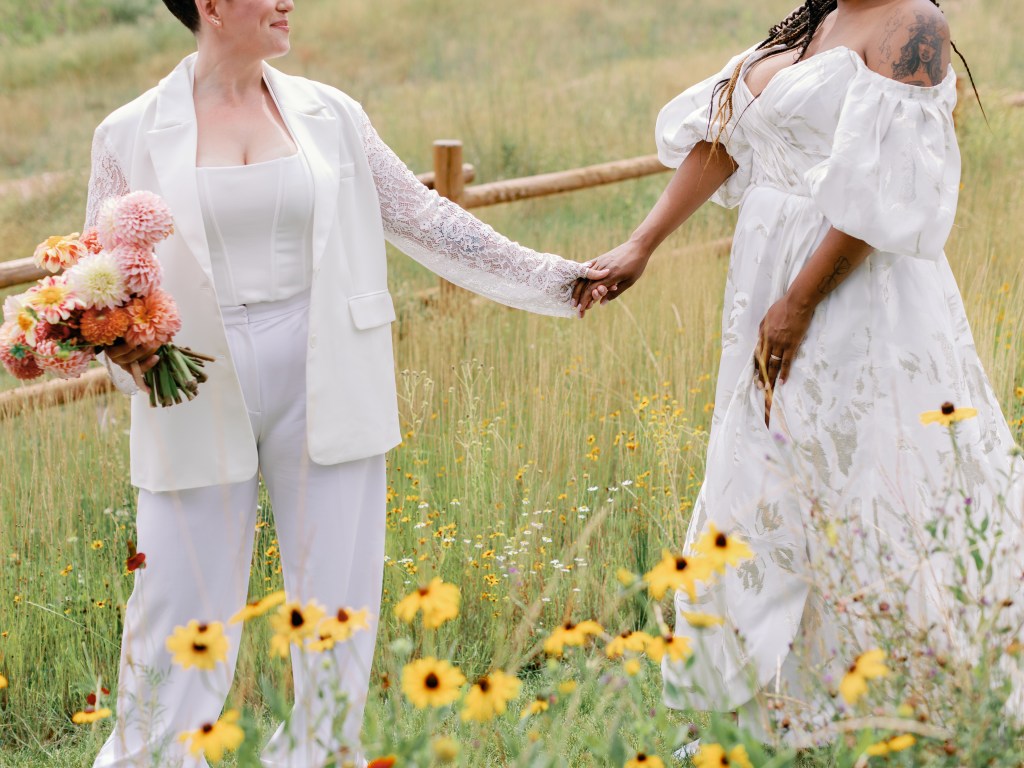Brand Archetypes for Wedding Vendors

When you think about your brand, what comes to mind? Likely, you just started running through a mental list of logos, patterns, colors, photos, etc. But did you know that every brand also has a personality?
Whether you’re building a brand from scratch or are established and want to refresh your business, we’ve got you covered with 12 wedding brand archetypes and how defining yours can help attract more ideal clients. WeddingPro Educator and branding expert, Kaleigh Wiese of Méldeen, offers her insights on brand archetypes and how you can easily infuse them into your brand strategy.
Why do brand archetypes matter for your wedding business?
Think of brand archetypes as the personality behind your brand—the vibe you give off and the story you’re telling. Whether you’re the dreamy Lover, the nurturing Caregiver or the innovative Creator, having a clear archetype helps you attract the couples who just get you. Brand archetypes are about creating a brand experience that feels true to you and irresistible to the right clients. According to Kaleigh, you can identify with multiple brand archetypes, so if there’s more than one you’re gravitating towards, that’s totally cool.
“I personally identify with Rebel, Ruler and Magician because I feel the most fulfilled in my work when I am able to seek revolution or share uniqueness in my work that encourages inspiration and creates something positive.”
Kaleigh Wiese of Méldeen
What are the 12 brand archetypes?
Brand archetypes are super helpful when creating a brand that customers can connect with on a deeper level. To get a better understanding of your archetype, let’s break each one down.
1. The Innocent
Innocent brands appeal to our sense of nostalgia and our desire for simplicity and goodness. They often create a sense of childhood and happiness.
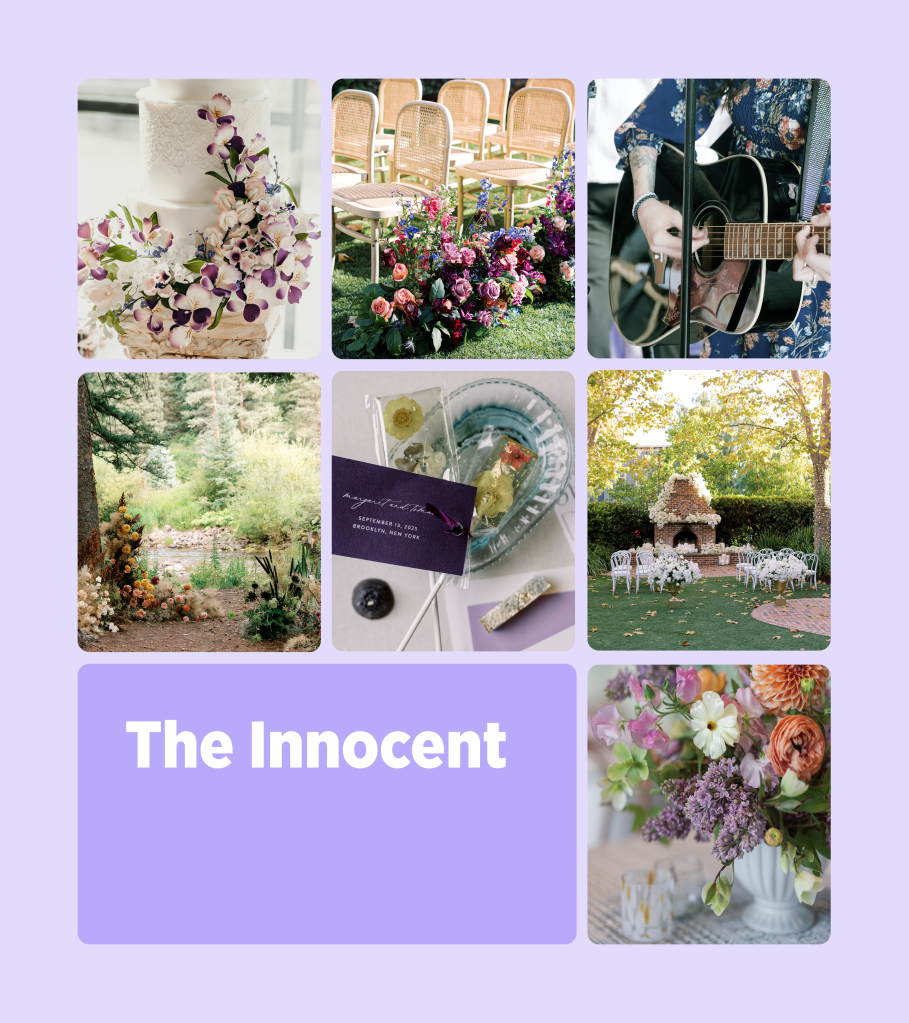
- Represents: Happiness, optimism, safety and youth
- Common traits: Use soft colors, lighthearted language and sentimental storytelling
- Vendors:
- Entertainers or childcare services
- Whimsical bakeries
- Floral designers with soft, pastel palettes
- Venues with garden or fairy-tale themes
- Brands we know:
- Coca-Cola: For decades, this brand has been associated with happiness, togetherness and simple pleasures.
- McDonald’s: Often portrayed as a place where families can come together to share happy moments.
2. The Everyman
Everyman brands celebrate the ordinary and love to make their customers feel like they are part of a community. They are known to be approachable and dependable.
- Represents: Faithfulness, supportiveness, down-to-earth values
- Common traits: Inclusive messaging, casual tone, comfort-driven experiences
- Vendors:
- Local family-run caterers
- DJ or MC with a warm, inclusive vibe
- Rustic or barn-style venues
- Affordable, quality photographers who focus on candid moments
- Brands we know:
- IKEA: This business is known for offering affordable and practical solutions for everyday life, making good design accessible to everyone.
- Levi’s: A classic and durable brand that is a staple in many people’s wardrobes, representing authenticity and a casual lifestyle.
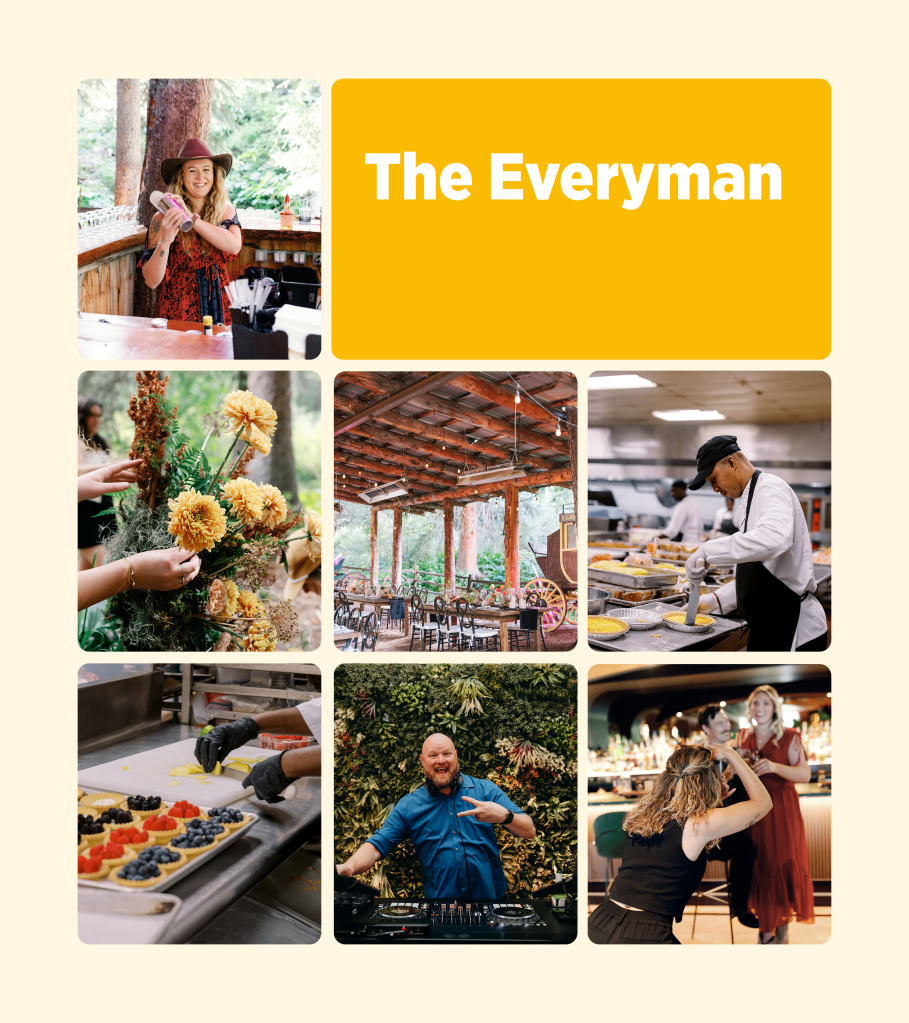
3. The Hero
Hero brands want us to be the best version of ourselves. You might see this archetype represented mostly with sports, achievements and social causes.
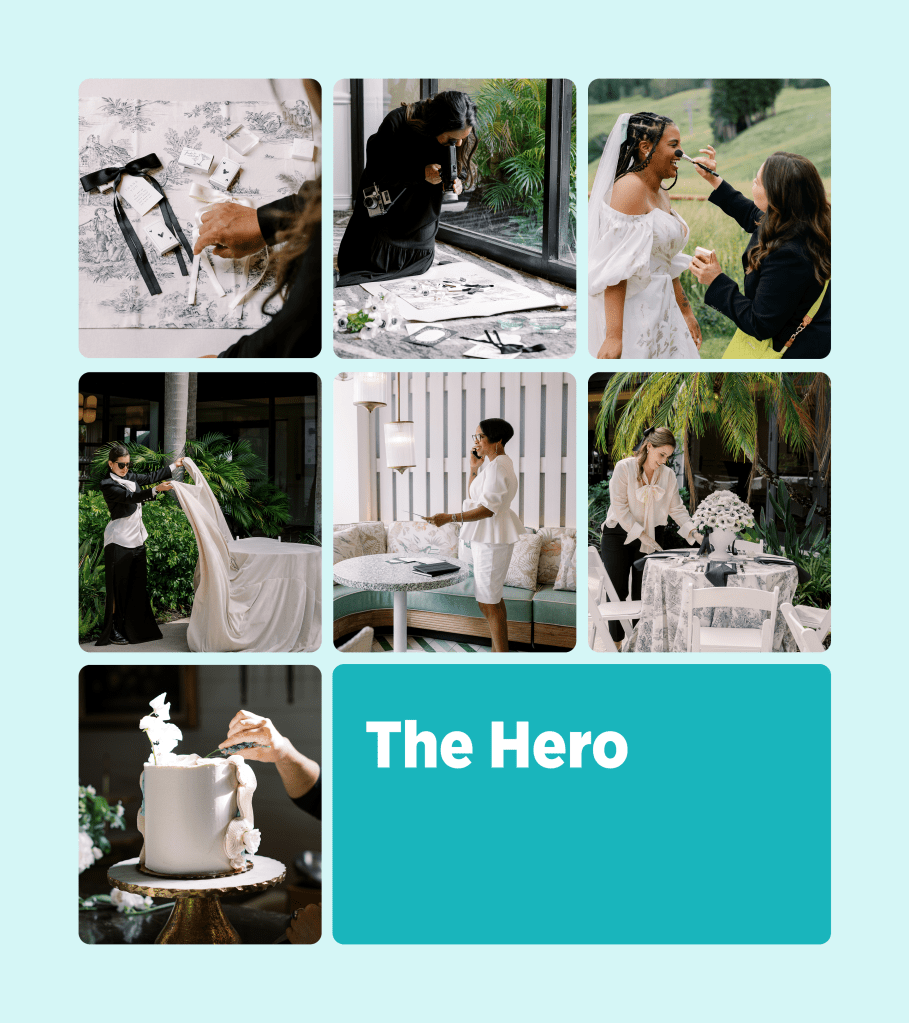
- Represents: Courage, strength, inspiration
- Common traits: Strong visual branding, motivational language
- Vendors:
- Wedding planners who strive to “save the day”
- Dramatic, high-end photographers
- Fitness/wellness coaches prepping couples for the big day
- High-performance makeup artists or stylists
- Brands we know:
- Nike: Their “Just Do It” slogan consistently inspires athletes and everyday people to reach their full potential.
- FedEx: Positions itself as the reliable and efficient hero that ensures your package gets there on time, overcoming logistical challenges.
4. The Rebel
Rebel brands strive to challenge the status quo. They are edgy, unconventional and have a strong desire for liberation.
- Represents: Change, rebellion, disruption
- Common traits: Bold or moody visuals, boundary-pushing style, provocative language
- Vendors:
- Funky cake designers
- Punk/rock bands or DJs
- Alternative wedding officiants
- Venues like industrial lofts, nightclubs, or nontraditional locations
- Brands we know:
- Harley-Davidson: Represents freedom, rebellion, and a non-conformist lifestyle on the open road.
- Virgin: Richard Branson’s brand has a long history of disrupting industries with a fun and rebellious spirit.
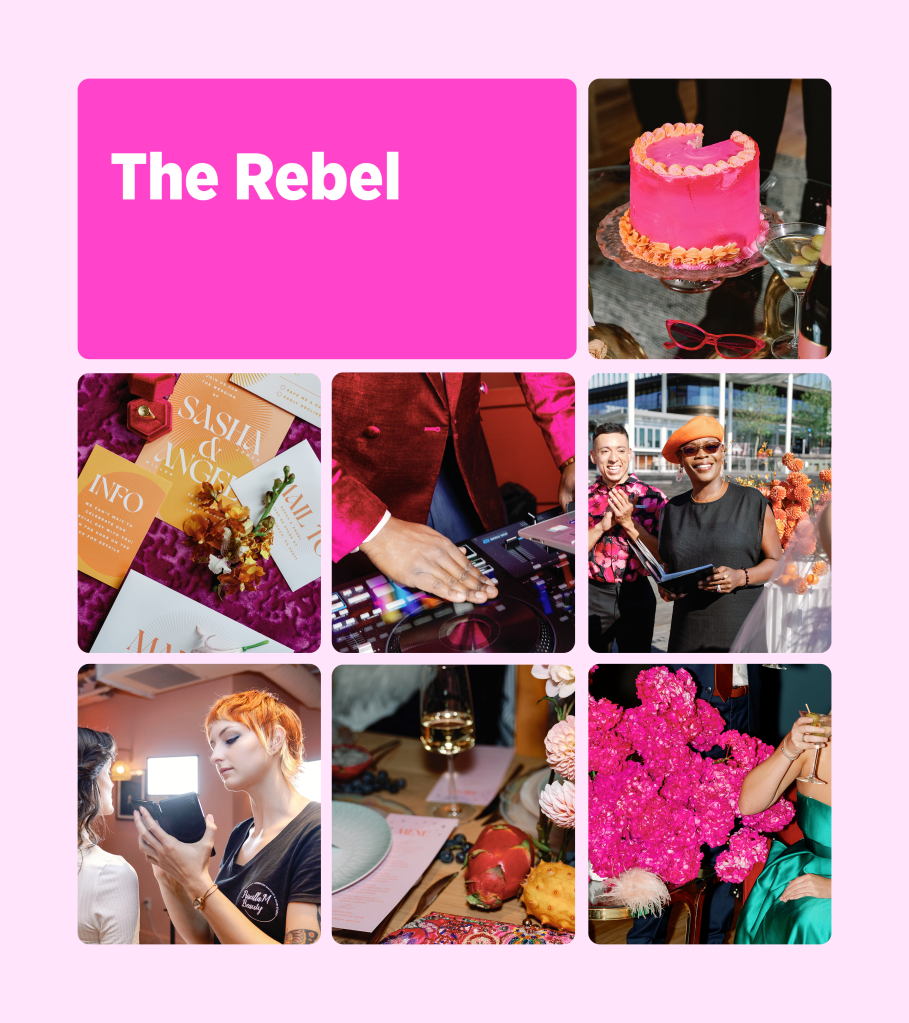
5. The Explorer
Explorer brands want us to tap into our desire for discovery and new experiences. They are mostly associated with travel, nature and pushing the boundaries.
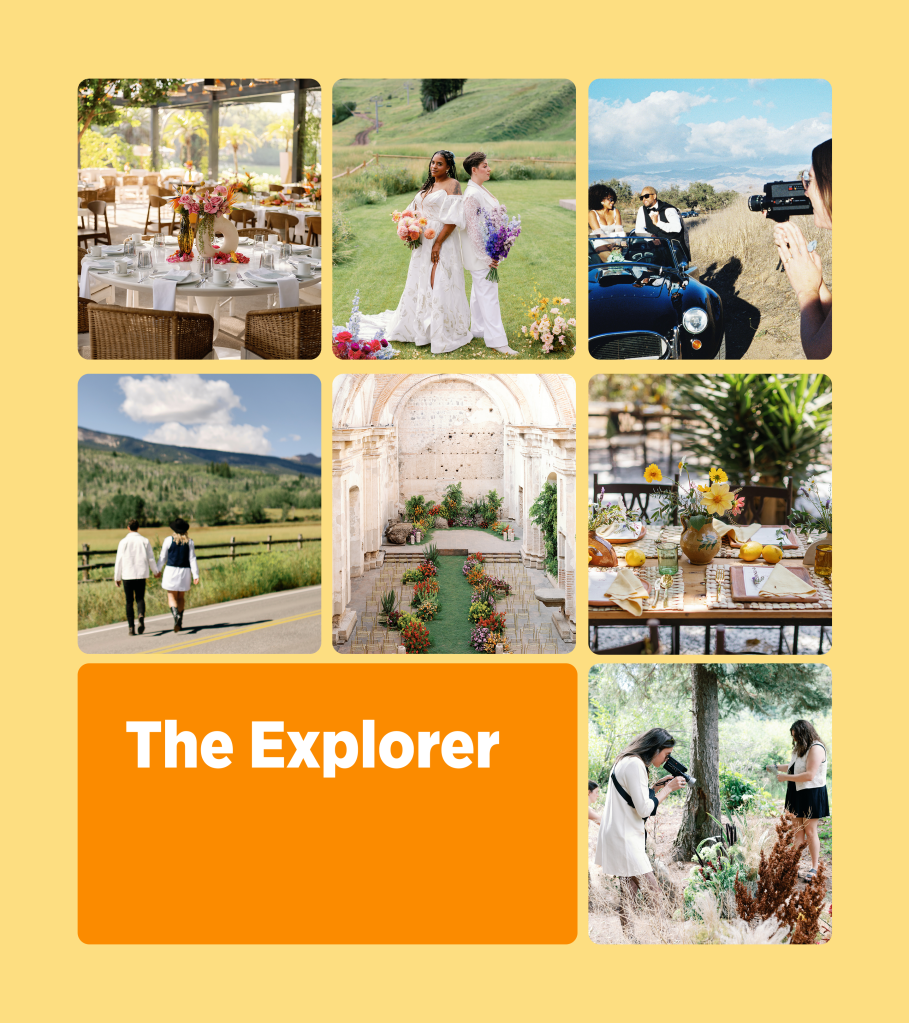
- Represents: Discovery, freedom, adventure
- Common traits: Natural elements, wanderlust themes, rustic luxury
- Vendors:
- Destination wedding planners
- Elopement photographers
- Outdoor venues (mountains, forests, beaches)
- Travel agents or honeymoon planners
- Brands we know:
- The North Face: Encourages exploration of the natural world with outdoor gear.
- Patagonia: A brand made for outdoor enthusiasts who are passionate about environmental exploration and preservation.
6. The Creator
Creator brands empower their customers to build, innovate, and express themselves. They are driven by imagination and the desire to bring a vision to life, often through art, design, or technology.
- Represents: Faithfulness, supportiveness, down-to-earth values
- Represents: Innovation, originality, self-expression
- Common traits: Customization, unique design, creative storytelling
- Vendors:
- Stationery artists or calligraphers
- Cinematic wedding videographers
- Designers who create bespoke dresses/suits
- Installation artists or decor stylists
- Brands we know:
- Apple: Positions itself as a tool for creative individuals to “Think Different” and bring their ideas to life.
- Adobe: Creators of software that helps creative professionals bring ideas to life through design and innovation.
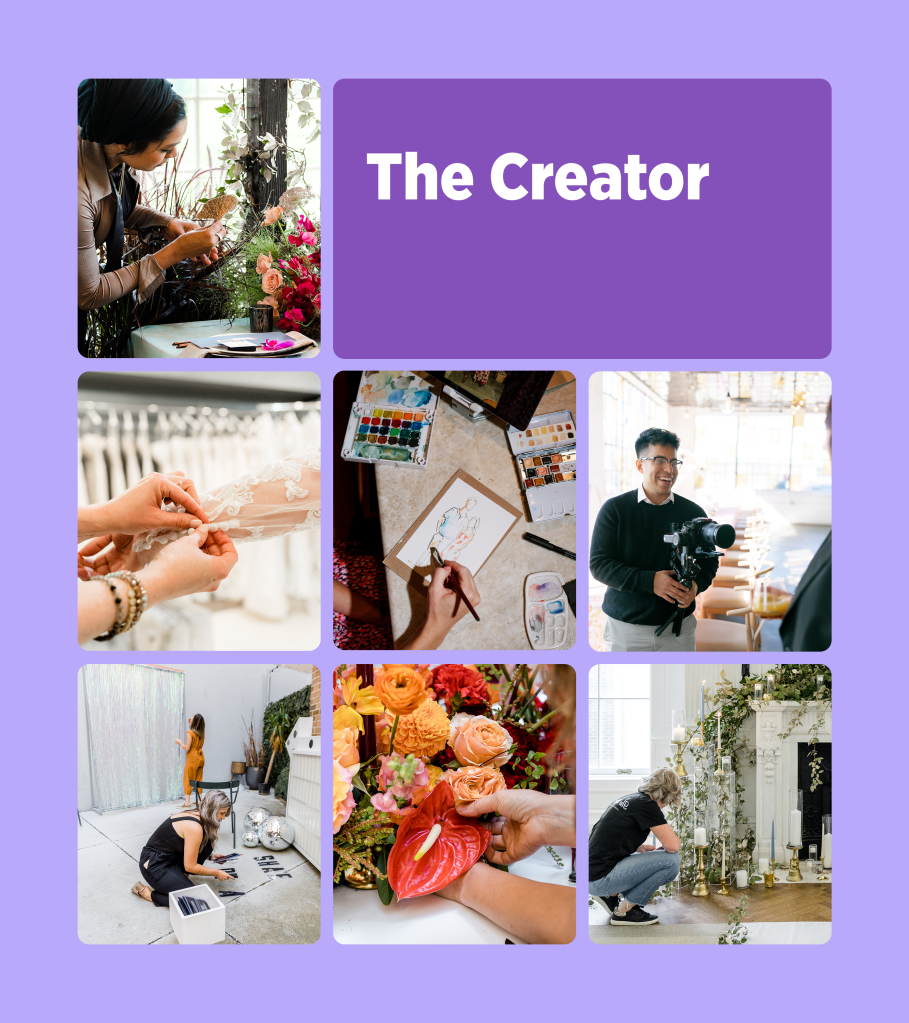
7. The Ruler
Ruler brands appeal to the desire for power, control and success. These brands represent quality and leadership.
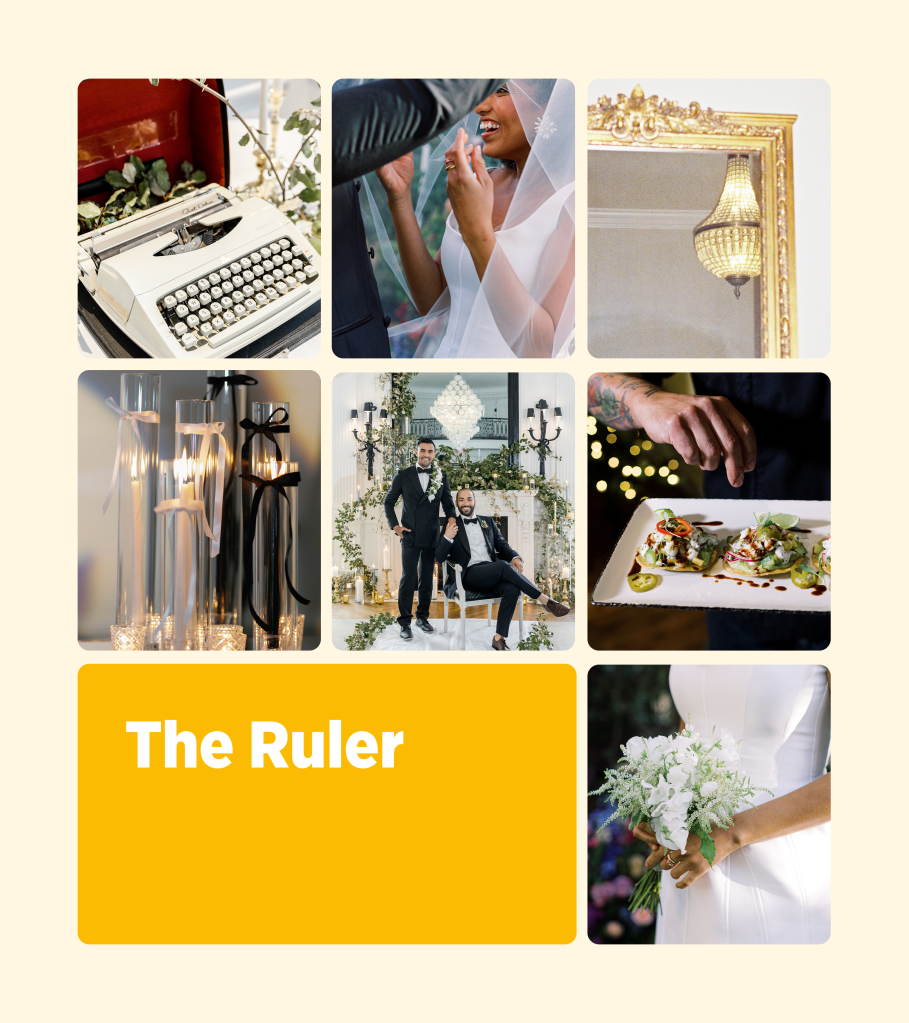
- Represents: Order, control, responsibility
- Common traits: Sophisticated visuals, polished tone, structured offerings
- Vendors:
- Full-service luxury planners
- High-end venues (ballrooms, estates)
- Premium catering services
- High-fashion bridalwear designers
- Brands we know:
- Rolex: A symbol of luxury, success and timeless quality.
- Microsoft: As a dominant force in the tech industry, it projects an image of leadership and control.
8. The Magician
Magician brands make the impossible possible. Their sense of wonder and innovation knows no bounds.
- Represents: Transformation, vision, wonder
- Common traits: Ethereal visuals, enchanting storytelling
- Vendors:
- Cinematic videographers
- Visionary florists who transform spaces
- Wedding tech vendors (lighting, special effects)
- Spiritual officiants or astrologers
- Brands we know:
- Disney: Creates magical experiences and are known for making dreams come true for both children and adults.
- Dyson: Transforms everyday appliances through innovative engineering and a touch of “magic.”
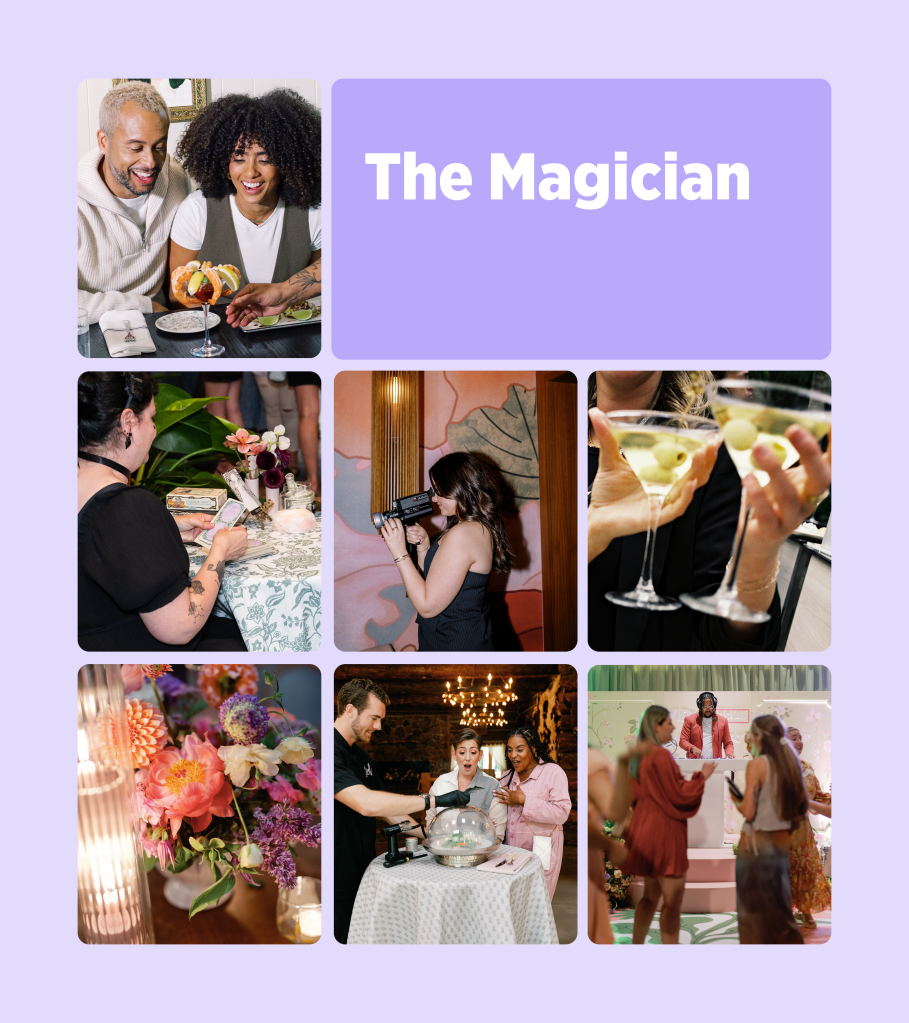
9. The Lover
Lover brands appeal to those who want connection and passion. They are mostly associated with romance, beauty and luxury.
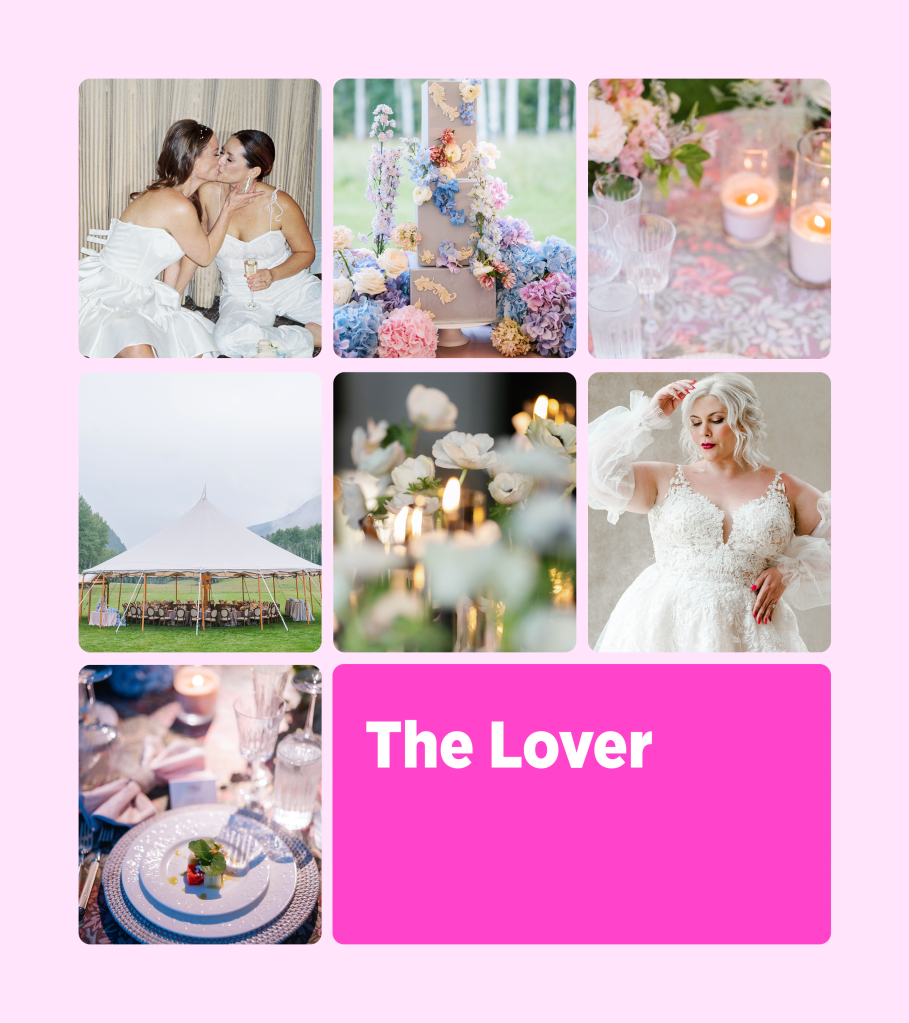
- Represents: Passion, intimacy, beauty
- Common traits: Elegant branding, deep emotional storytelling
- Vendors:
- Boudoir photographers
- Floral designers with rich, romantic palettes
- Intimate venues (vineyards, candlelit spaces)
- Specialty dessert or wine vendors
- Brands we know:
- Victoria’s Secret: Built on an image of sensuality, intimacy and allure.
- Chanel: Represents elegance, sophistication and a deep appreciation for beauty and luxury.
10. The Caregiver
Caregiver brands are all about helping and protecting others. They bring about feelings of trust, security and compassion.
- Represents: Compassion, nurturing, support
- Common traits: Soft visuals, empathetic language
- Vendors:
- On-site coordinators focused on guest care
- Childcare services
- Vendors emphasizing inclusivity and accessibility
- Counselors or premarital coaching services
- Brands we know:
- Johnson & Johnson: A trusted brand for family care products that emphasizes gentleness and safety.
- Volvo: Has built its brand reputation on safety and protecting its drivers and their families.
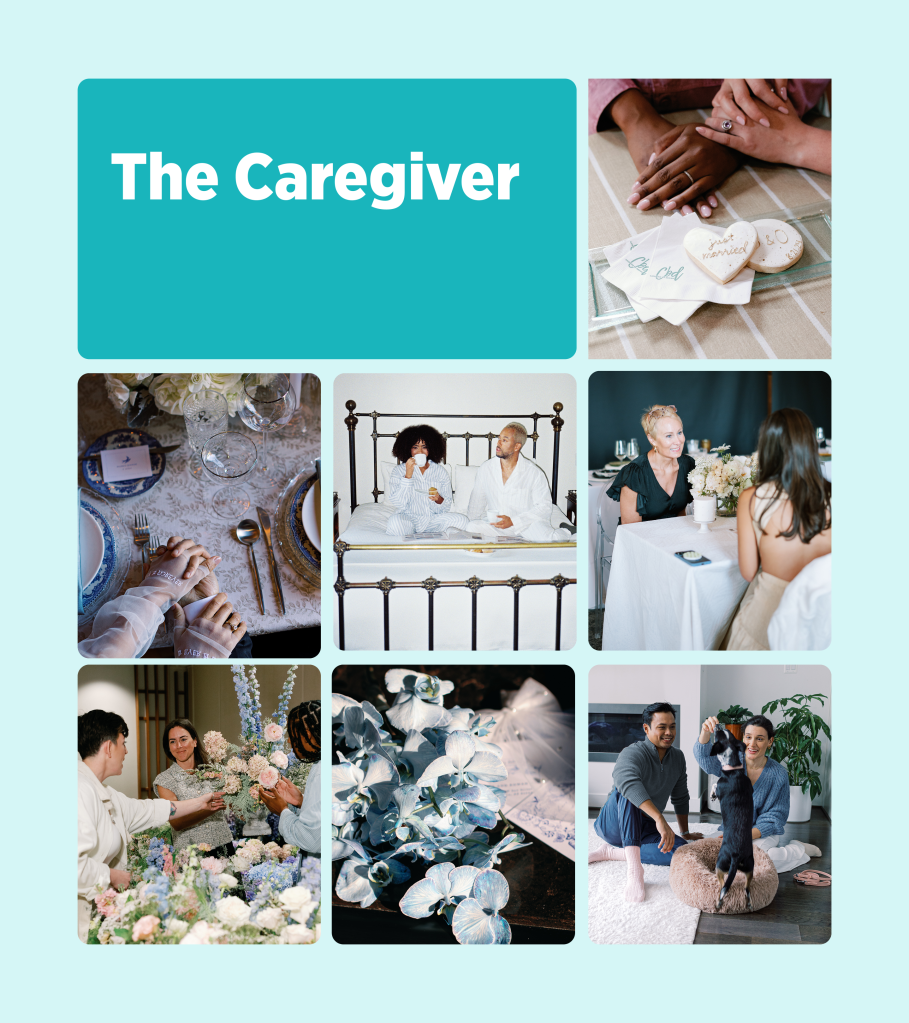
11. The Jester
Jester brands bring joy and laughter to their clients. They are known for their wit and lightheartedness.
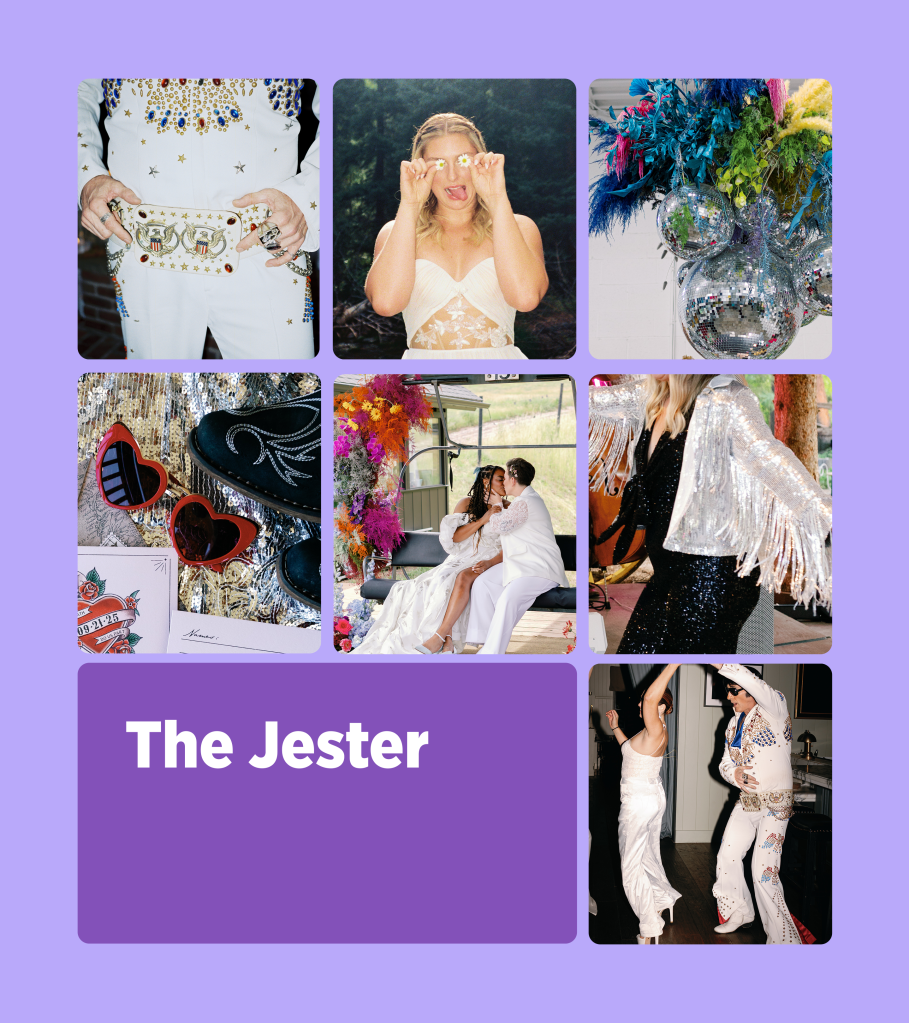
- Represents: Fun, joy, spontaneity
- Common traits: Bright visuals, irreverent tone
- Vendors:
- Photo booth companies
- Comedians or improv MCs
- Themed or novelty caterers (food trucks, donuts, etc.)
- DJs with interactive party games
- Brands we know:
- M&M’s: The colorful, talking candy characters bring a sense of fun and playfulness to the brand.
- Old Spice: Revitalized its brand with humorous and absurdist advertising campaigns that went viral.
12. The Sage
Sage brands are often positioned as sources of knowledge, wisdom and truth. They appeal to those who value understanding and expertise.
- Represents: Wisdom, insight, understanding
- Common traits: Calm tones, educational content, clarity
- Vendors:
- Seasoned planners or consultants
- Officiants with deep storytelling skills
- Vendors offering guidance-driven services (timeline help, budgeting)
- Legacy-focused videographers or memory-preservation services
- Brands we know:
- Google: The ultimate tool for finding information and seeking knowledge.
- BBC: A trusted source of news and information with a reputation for accuracy and depth.
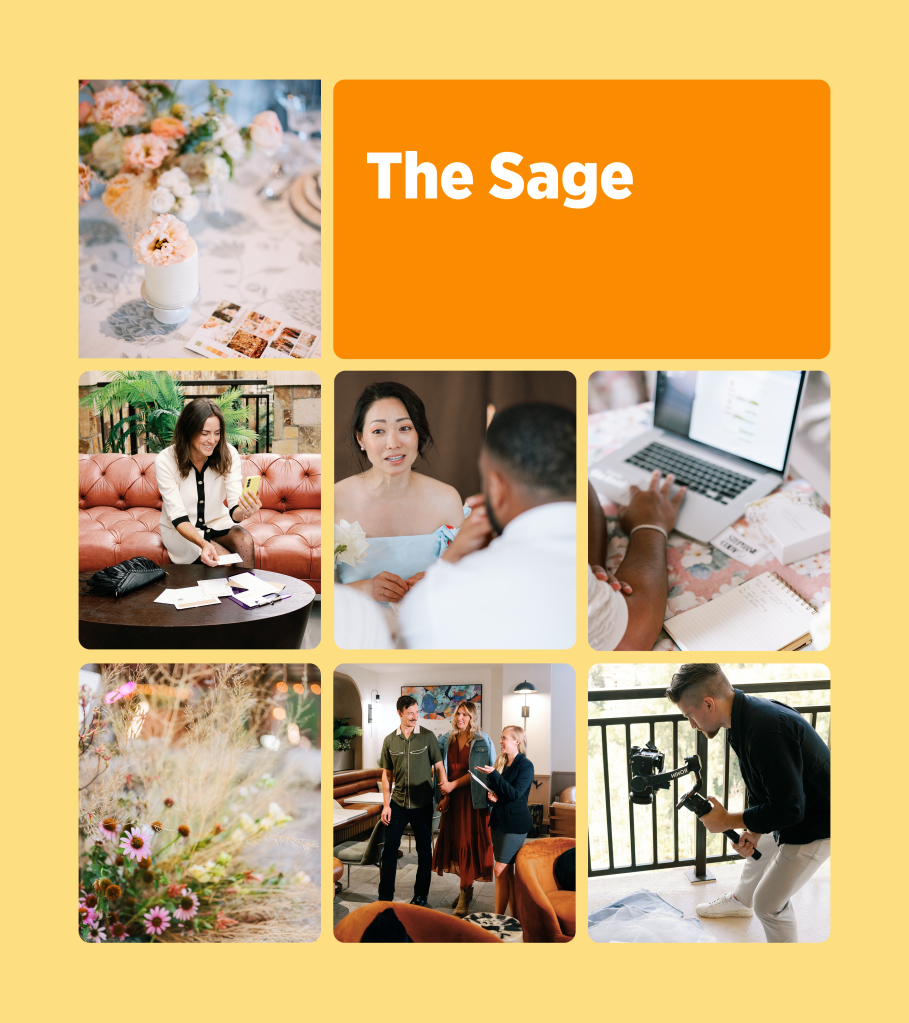
How do I know which brand archetype my SMB is?
According to Kaleigh, the best way to know what your brand archetype is is to “think of your most successful event days and what about your approach helped make it great.” To get more of an understanding of which archetype you are, you can follow these three steps:
1. Determine your brand personality
At the end of a long work day, when you’re relaxing and reflecting on the event— what part satisfies you the most? Is it because you had full leadership? Is it because you created a revolution in your local market? Is it because you truly brought the couple’s ideas to life like a fairytale? Identifying what you love most about your job is a great way to help determine your brand archetype.
2. Find out what others say about you
Look at your past client reviews for similarities in the language they use. Mirroring language is a great sales technique that can help you connect before you have a relationship started via email or inquiry. Mirroring your ideal client’s desires allows them to feel like you hear them from the start, which creates trust.
If they said that you were such an amazing florist because you thought outside of the box (Archetype: The Explorer), then lean on that, talk about it in your “About Us” page if that is what makes you fulfilled in your work.
3. Do a personal audit
Put yourself in the shoes of your potential clients and ask yourself:
- Search for your business with fresh eyes. How do you show up to prospects?
- Does your brand voice speak clearly about your passions?
- Are you reminding them of the highlights of why you work in this industry?
If you feel like your website isn’t reflecting the right message, it’s time to rethink the message you want to put out about your brand. Add a little website revamp to your rebranding process and make sure you’re showcasing your passions and skills while doing so.
How to use brand archetypes in your brand strategy
Understanding your brand archetype isn’t just an exercise; it’s the foundation for building a brand that is both recognizable and relatable. Kaleigh advises, “when we speak loudly about our true passion in our work, we naturally attract the RIGHT clients because they are looking for someone just like you who can do what you offer.
Ultimately, your archetype isn’t a box to trap you, but a lens to focus your passion. It differentiates your business, builds unwavering trust, and paves the way for greater success in a crowded industry.
Now that you’re thinking about your brand’s archetypes and personality, you might also be wondering about how you can make your brand more authentic. Add this article to your reading list to get tips to help you Design a Winning Marketing Mix to Score More Clients.
Let's grow your business together!
Start advertising on The Knot and WeddingWire, the top two wedding planning platforms.

